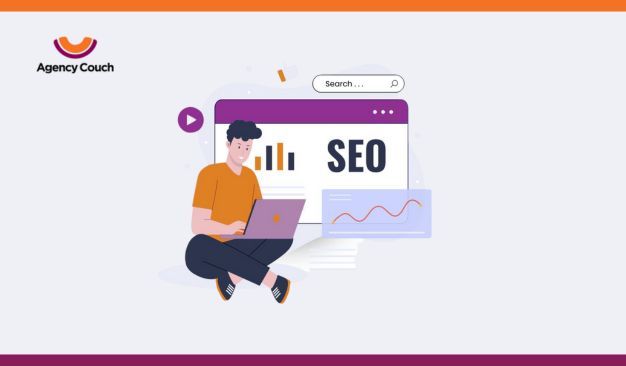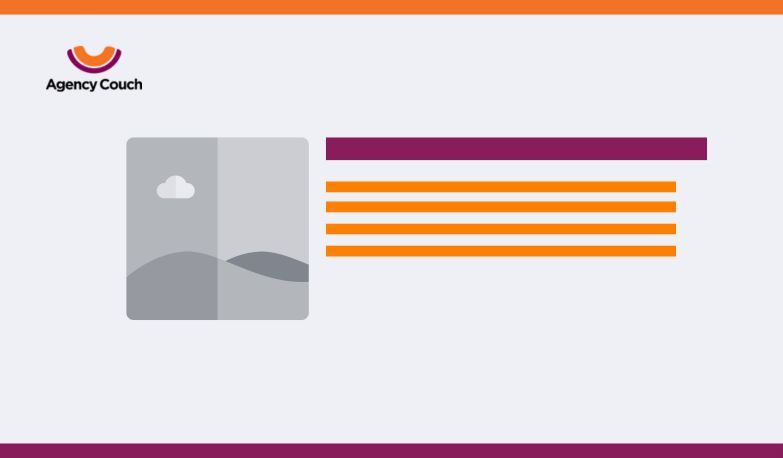Developing a website requires a lot of brainstorming, and the beginning is the toughest– from choosing a domain name to deciding the platform you will build your website on, everything requires quite some research.
When it comes to starting your online store, you must figure out which eCommerce platform is best for you. While there are many e-commerce solutions available, the two of the most preferred platforms are Shopify and WooCommerce. Even though the end goal of both is the same, these two platforms are completely different from each other.
In this article, we will shed light on different aspects of eCommerce. We will analyze both platforms based on various criteria, such as features, ease of use, and pricing.
An Overview
Shopify
Shopify is a closed eCommerce system that offers everything that you need to create your online store within one place. Founded in 2006, Shopify came into existence after its founders Tobias Lutke and Scott Lake found flaws in the contemporary eCommerce platforms.
Shopify is a hosted solution. It helps you start your online store without having to worry about the technical aspects of it. From developing a website to hosting, this all-in-one eCommerce solution encompasses everything. So, you can create and launch your online store by yourself within minutes.
WooCommerce
On the other hand, WooCommerce is an open-source platform. WooCommerce is a part of WordPress (one of the most powerful content management systems). Hence, it allows you to leverage the WordPress site to run your online store.
Since it is open-source, you have much more flexibility and control over how you want your online store to be. You can customize your website on your own, install plugins for different functions, and even purchase your eCommerce hosting.
WooCommerce is a little more complex than Shopify and may require you to hire a technical expert if you are not well-versed with the technical aspects of building a website.
Shopify Vs WooCommerce: Everything You Need to Know!
To come to a decision, you must first analyze these platforms based on various factors that are important for an online store. You must also scrutinize your requirements clearly in order to choose the right eCommerce solution.
According to the latest stats, 28% of all eCommerce websites use WooCommerce, whereas 20% use Shopify in 2022. Considering that you know your preferences well, let’s dive in and explore these platforms in detail.
Ease of Use
Ease of use is an important aspect when it comes to running an online store. Especially if you are not tech-savvy, the platform that you use should set you free from technical struggle.
Shopify
Shopify is a complete solution in itself. So, the platform doesn’t require you to be a technical expert at all. You can easily set up your website in a few steps:
- Sign Up
- Find themes and customize your website
- Add products
- Choose a hosting package
- Add a domain
- Configure payment settings
- Launch your site
You can modify your website’s functionality as and whenever you need, with thousands of apps and plugins available on the Shopify App Store.
Yes, setting up an online store with Shopify is that easy! Shopify prioritizes ease of use and simplicity to cater to its target customers.
When it comes to support, Shopify in-houses a 24/7 support team that is available on phone, chat, and email. They also have a pretty active forum where a community of developers readily answers your questions.
WooCommerce
Creating your online store on WooCommerce is more complex and time-consuming as it is not a hosting solution. If you are not in a hurry and want a high level of customization on your eCommerce site, it is the right solution for you.
To get your store running, you would first need to install WordPress, install the plugin, and activate it.
Further steps include:
- Setting up the account
- Selecting payment options
- Configuring shipping
- Adding extensions and plugins
- Adding products and descriptions
- Launching the website
Although the above steps look almost similar to Shopify, all the resources are not available within the system as they are in Shopify. You must look for suitable hosting services, plugins, and themes by yourself. You would also need to use some programming to customize various options on your website.
Though the freedom to style and configure your e-store as you want is a plus point, you have to be careful while choosing your options. Additionally, the availability of many third-party extensions and plugins gives you a variety of alternatives.
Also, unlike Shopify, WooCommerce doesn’t have a centralized support system. However, this platform provides plenty of other resources, such as Docs, FAQs, and the WooCommerce community. Because this platform has millions of users, the community is very large, and support is always easily available on multiple forums.
Scalability & Growth
You should be able to scale your website as your business grows.
Shopify
Since Shopify is used by many successful online businesses, you can be assured that scalability is not a problem with this platform.
However, as Shopify handles all the back-end affairs, such as security, performance, backups, bandwidth, and compatibility, for you, they charge a fee that can go significantly higher as you scale.
WooCommerce
Contrarily, WooCommerce gives you complete control over expansion and cost. There are plenty of internal and third-party extensions that are available for free and fairly do the job. So, the scalability is higher with remarkable cost control.
There is no limit to how much you can upgrade your platform and hosting. So, it becomes feasible for you to stretch the boundaries of your eCommerce site. The only downside of this feature is that you have to look for and analyze various options that you have. You might have to spend extra time and effort to ensure the maximum quality and performance of your website.
Marketing Tools & SEO
Marketing and SEO often take the backseat when you create your website. However, this is the one important thing that would drive traffic and revenue. So, you technically can’t afford to miss this aspect of eCommerce.
Shopify
SEO in Shopify has some limitations as it is primarily an eCommerce hosting platform. Shopify doesn’t allow for much modification in URLs due to its set format. Besides, you don’t get enough flexibility and functionality on your eCommerce Shopify website for blogs and content.
However, It provides some basic SEO built-in features, such as auto-generated canonical tags, sitemap.xml and robots.txt, and title tags. Alongside, you can link your social media pages to easily market your store.
It also allows you to optimize your content using keywords and relevant info. You can also edit meta titles, meta descriptions, and URLs for every page and product on your website.
Today many Shopify-based stores are performing very well, which proves that Shopify’s range of SEO can suffice your marketing goals. The page speed of the Shopify website is also much better than a WooCommerce store which plays a huge role in conversion.
WooCommerce
WooCommerce is basically built on a content management system and hence, supports SEO like no other. Because WordPress happens to be the most SEO-friendly platform, you get unlimited access and flexibility to do SEO however you like.
Apart from paid marketing, WooCommerce SEO helps you drive enormous amounts of traffic to your store organically. Sustainable SEO takes time, but once you are there, you will only grow in terms of popularity if you keep a tab on your SEO.
With WooCommerce, there is on-page SEO, where you can customize meta titles, meta descriptions, URLs, as well as take complete control of headline tags, keywords, internal and external links, website speed, and responsiveness.
And then, there is off-page SEO, where you can share your content on different platforms, create guides, allow guest posting, and even lodge different content formats.
The average page loading time of WooCommerce stores is found to be 776 milliseconds, whereas according to Google, the ideal page loading time should be within 500 milliseconds.
You can counterweigh this by investing in a good hosting program and implying other strategies that reduce the load time for your WooCommerce website.
Payment Methods
The end goal of any online store is to facilitate smooth transactions and convert maximum visitors to customers. If your visitors are leaving your website after reaching the cart, there has to be some problem with your payment method. The more payment options you add, the better it is.
Shopify
Shopify supports as many as 100 payment gateways along with its own payment processor. Shopify Payments doesn’t require any configuration and is free to use. With this payment method, your transactions are automatically synced with your inventory and sales.
However, if you integrate third-party payment gateways, Shopify charges a transaction fee that ranges between 0.5% to 2% based on the payment option and your plan with Shopify. The higher the plan you choose, the lesser fee you will be charged.
WooCommerce
WooCommerce also supports the majority of popular payment gateways. It even supports many regional payment gateways that aren’t as popular. You can find many payment add-ons by various companies that you can integrate easily in your store.
And the best part is that WooCommerce doesn’t charge a transaction fee for third-party payment gateways. You only have to pay the processing fee that any payment gateway itself imposes.
Inventory Management
On your eCommerce site, you must be able to add products in bulk, manage and track stocks, generate reports, and automate purchase orders.
Shopify
Shopify offers you control over your inventory tracking system. You can perform all the tasks effortlessly on this platform. However, it limits the variables that you can add for each product or service. With Shopify, you can add up to 100 variations and three options for each product.
WooCommerce
There’s practically no limit to what you can do with your inventory in WooCommerce. Along with all the essential inventory management tasks, you can easily upload and edit your products through the WordPress editor. This platform is pretty flexible and customizable. And unlike Shopify, WooCommerce doesn’t have a limit for variations and product options.
Security
Security has to be another non-negotiable aspect of eCommerce. When a customer trusts your website with their personal information and card details, you have to assure them that their data is safe and secure.
Shopify
As a hosted platform, Shopify takes complete charge of your site’s security. Shopify offers some built-in security features within your package. The platform also provides an SSL certificate. Since Shopify charges a considerable amount of fee, it takes full responsibility for your website’s protection.
WooCommerce
Contrarily, the onus of security is on you when you use WooCommerce to create your online store. WooCommerce doesn’t come with any built-in security features. From getting your SSL certificate to configuring security plugins, you have to take care of all measures to protect your site from threats.
Pricing
Pricing plays a crucial role when it comes to deciding which platform you would want to use for your e-store.
Shopify
Shopify is a hosted eCommerce solution and hence, offers a complete package. All the ease and features that Shopify comes with require you to pay a fee. You can choose a monthly or an annual plan based on your requirement. You may also need to pay some in-app charges for additional services or elements that you use.
So, yes, Shopify turns out to be a bit more expensive but is worth it when compared to how quick and easy it is to run an online store with it.
WooCommerce
WooCommerce is an open-source platform and free to use. You can customize your online store in an amount as minimum as you wish to, with lots of free apps and plugins available across the web.
But to ensure optimum quality and performance, you might want to go with priced options. The cost of creating a WooCommerce website is as low or as high as you can think of based on your choices and requirements. Besides, you would also need to pay for a hosting service and domain name.
Summarizing
By now, you might have made up your mind about which platform you will be using for your website. However, here is a quick recap:
Shopify is the best option if you have to quickly launch your online store, and the cost is not a concern for you. Also, you might want to consider the limitations you will have with Shopify. However, the platform is evolving and coming up with solutions for every problem you might encounter. So, you can effectively maintain a quality store online with Shopify.
WooCommerce, on the other hand, is best when you have the technical expertise, or you have someone who knows the ins and outs of this platform. Also, when you have budget limitations, or if you want a highly customized store, WooCommerce is for you. The platform allows an unimaginable amount of flexibility and control. But you have to take extra care and put in additional effort to ensure great performance and security.
So, in the end, you have to map out your plan and make the right decision for your virtual store. If you are still confused, you can book our free consultation.



